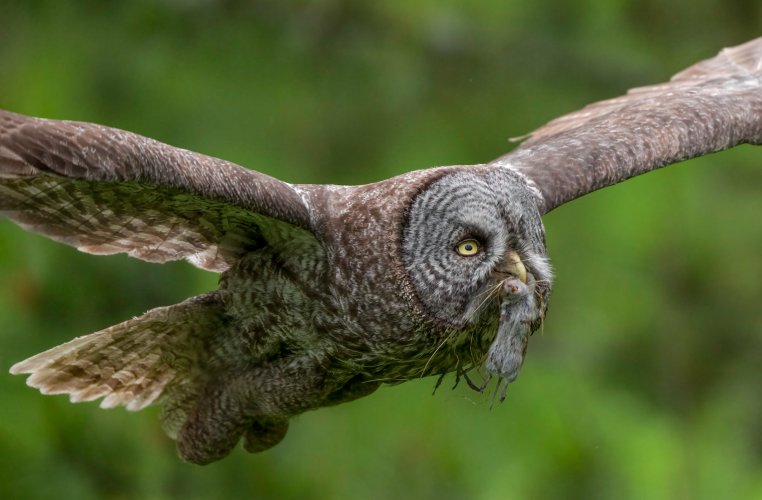- Post score: 13
- #1
Great Grey Owls are one of the longest owl species, However, they are not among rhe heavier owls, as much of their apparent bulk is feathers, needed for insulation in their large far northern range. After the owlets have fledged, the female leaves, and the nale is respntfir raising the offspring to independence. Thus, this is mos likely a male. As with most owls, males are smaller than females.


